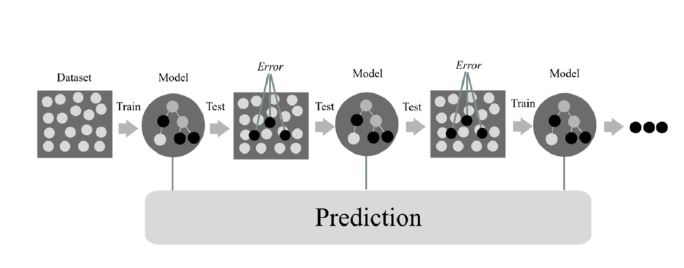A Two-Stage Customer Journey Analytical Model in Single House Business
Main Article Content
Abstract
The single housing industry is currently experiencing a continuous expansion in demand for housing. Addressing the needs of different customer groups is the key to increasing the rate of sales conversion. The objective of this research is to propose a two-stage single house customer journey analytical model that consists of two stages. The first stage concerns the customer journey between registration and reservation process and the second one identifies the customer loyalty from reservation to transfer stage. The four classification data mining techniques have experimented. The experiments include the accuracy and F-Measure in comparison and also perform the statistical testing. The Artificial Neural Network was the most accurate model for both stages. This model analyzes the probability of the customer progressing through the stages to the conclusion of purchase by learning the customer’s characteristics and the factors involved in the customer's decision. The model displays the reservation and transfer result for customers who have achieved the respective reservation and transference steps according to their registration profile. Experiments showed that the proposed two-stage models could predict customer loyalty, thereby enhancing relationship management between customers and organizations. It also confers a competitive advantage within the industry.
Article Details

This work is licensed under a Creative Commons Attribution-NonCommercial-NoDerivatives 4.0 International License.
References
CBRE (Thailand) Co., Ltd., “Thailand Real Estate Market Outlook 2019,” CBRE. [Online]. Available: https://www.cbre.com/research-and-reports/Thailand-Real-Estate-Market-Outlook-2019. [Accessed: 30-Jun-2019].
A. B. Galvao and K. Sato, “Human-Centered System Architecture: A Framework for Interpreting and Applying User Needs,” Volume 3a: 16th International Conference on Design Theory and Methodology, 2004.
Kreyon, “10 Ways Business Process Automation is changing Real Estate,” kreyon systems | Blog | Software Company | Software Development | Software Design, 16-Sep-2019. [Online]. Available: https://www.kreyonsystems.com/Blog/10-ways-business-process-automation-is-changing-real-estate/. [Accessed: 30-Apr-2019].
D. E. Holmes, Data mining. Berlin: Springer, 2012.
Colliers International, “Thailand Property Research Reports Q3 2019,” Thailand Property Research Reports Q1 2019 | Thailand | Colliers International. [Online]. Available: https://www.colliers.com/en-th/thailand/insights/quarterly-reports. [Accessed: 01-Oct-2019].
N. Bhatnagar, “Customer Relationship Marketing: Customer-Centric Processes for Engendering Customer- Firm Bonds and Optimizing Long-Term Customer Value,” Advances in Customer Relationship Management, Nov. 2012.
K. J. Cios, Data mining: a knowledge discovery approach. New York, NY: Springer, 2010.
X. Cheng, M. Yuan, L. Xu, T. Zhang, Y. Jia, C. Cheng, and W. Chen, “Big data assisted customer analysis and advertising architecture for real estate,” 2016 16th International Symposium on Communications and Information Technologies (ISCIT), 2016.
H. Xue, “The Prediction on Residential Real Estate Price Based on BPNN,” 2015 8th International Conference on Intelligent Computation Technology and Automation (ICICTA), 2015.
N. Yang, “Research on the customer relationship management of real estate enterprise,” 2010 IEEE 2nd Symposium on Web Society, 2010.
H. Ziafat and M. Shakeri, “Using data mining techniques in customer segmentation,” Int. Journal of Engineering Research and Applications, vol. 4, no. 9, pp. 70–79, 2014.
F. Hartwig and B. E. Dearing, Exploratory data analysis. Newbury Park: Sage Publ., 1994.
K. Singh, “The Comparison of Various Decision Tree Algorithms for Data Analysis,” International Journal of Engineering and Computer Science, pp. 21557–21562, Jan. 2017.
B. Liu, Y. Wei, Y. Zhang, and Q. Yang, “Deep Neural Networks for High Dimension, Low Sample Size Data,” Proceedings of the Twenty-Sixth International Joint Conference on Artificial Intelligence, 2017.
L. Hamel, Knowledge discovery with support vector machines. Hoboken: John Wiley & Sons, 2009.
A. Natekin and A. Knoll, “Gradient boosting machines, a tutorial,” Frontiers in Neurorobotics, vol. 7, 2013.
K. Ramasubramanian and A. Singh, “Machine Learning Model Evaluation,” Machine Learning Using R, pp. 425–464, 2016.
D. Simon, Evolutionary optimization algorithms. Chichester: Wiley-Blackwell, 2013.
F. M. Dekking, A modern introduction to probability and statistics: understanding why and how. London: Springer, 2010.


